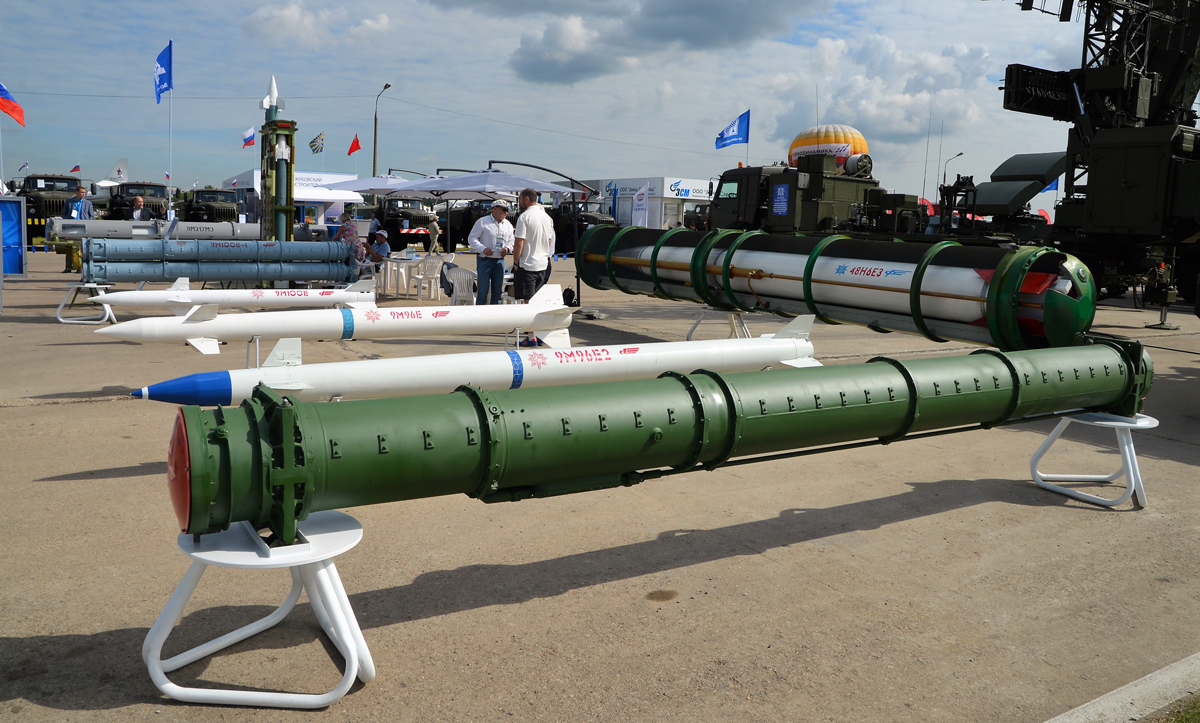Click Here to View This Page on Production Frontend
Click Here to Export Node Content
Click Here to View Printer-Friendly Version (Raw Backend)
Note: front-end display has links to styled print versions.
Content Node ID: 400216
The Russian defense ministry has taken delivery of a first set of the S-350 Vityaz surface-to-air missile (SAM) system developed and manufactured by Almaz-Antey Air and Space Defense. The delivery ceremony took place in late December at the Kapustin Yar firing range in southern Russia, where the SAM system completed firing trials in April 2019. Given a GRAU index of 50R6A, the S-350 is a medium-range SAM able to intercept both aerodynamic and ballistic targets as well as to repel large-scale attacks by modern UAVs and air-launched munitions.
Even though the S-350’s development and testing involved repeated delays and postponements, it managed to attract a number of export customers. Soon after public demonstrations of a desk model at the turn of the century, the Republic of Korea (RoK) contracted Almaz–Antey to help it develop the KM-SAM Cheongung. Effectively a customized version based along the same lines, the KM-SAM uses domestically designed and made components, as well some of European origin. Already operational, the KM-SAM now serves as a basis for the development of more advanced land- and ship-based derivatives. Traditional clients for Russian equipment, including Algeria, are reported to have signed for the exportable S-350E version that was unveiled at MAKS 2013.
Soon after the system’s architecture and performance were made public, experts dubbed it “the poor man’s S-400.” Indeed, the NIEMI design house (now integrated into Almaz-Antey’s corporate structure) created the S-350 as an “inexpensive, simplified version” of the S-400 Triumph using the latter’s key technologies and even some hardware components. The biggest difference between the two is that the Vityaz employs only two missile types (9M96 and 9M100) whereas the more complex Triumph has seven. This enabled a significant decrease in the number of vehicles in a battery to cut acquisition and maintenance costs, as well as to ease logistics.
Major vehicle components include the 50P6A transporter-erector-launcher, 50N6A multifunctional radar, and 50K6A control vehicle, all on wheeled chassis (6x6 and 8x8) BAZ trucks. Whereas the S-400 comes with many radars, the S-350 makes do with the single 50N6A, with simplified fire control algorithms. This narrows weapon choices to the 9M96 active radar-guided and 9M100 heat-seeking missiles. The heaviest of them, the 9M96E2 at 420 kilograms (926 pounds), has a range of 120 km (65 nm), compared to 65 km for the standard 333 kilogram 9M96.

When ordering the S-350 concept study in 2007, the Russian defense ministry wanted to save on research and development costs, because much of it had already been covered by the South Korean contract. At the time, then-Russian air force commander General Zelin described the system as “a direct replacement for the S-300P/PS." Even though the 9M96 was much smaller than the latter’s 5V55 missile, it offered similar ranges. Development began in earnest in 2007-2012, when all control algorithms were perfected, documentation for production issued, and an initial equipment set launched into production. However, a number of failures during firing trials caused repeated delays to entry into service. A developmental system was deployed in Syria in 2017.
The S-350 provided the basis for development of a navalized system, the Poliment-Redut, which is already operational on the Project 22350 Gorshkov-class frigates. The developer also offered the S-350 as a replacement to the Buk-1/2 series. The defense ministry considered such a proposal but made a decision in favor of the Buk-M3, whose export version is known as Viking. Even though both systems offer comparable characteristics, the Buk-M3 comes with more benefits as a legacy system tailored to the specific army requirement for protection of troops and armor on the battlefield, whereas the S-350’s primary role is to protect key installations away from the front line.